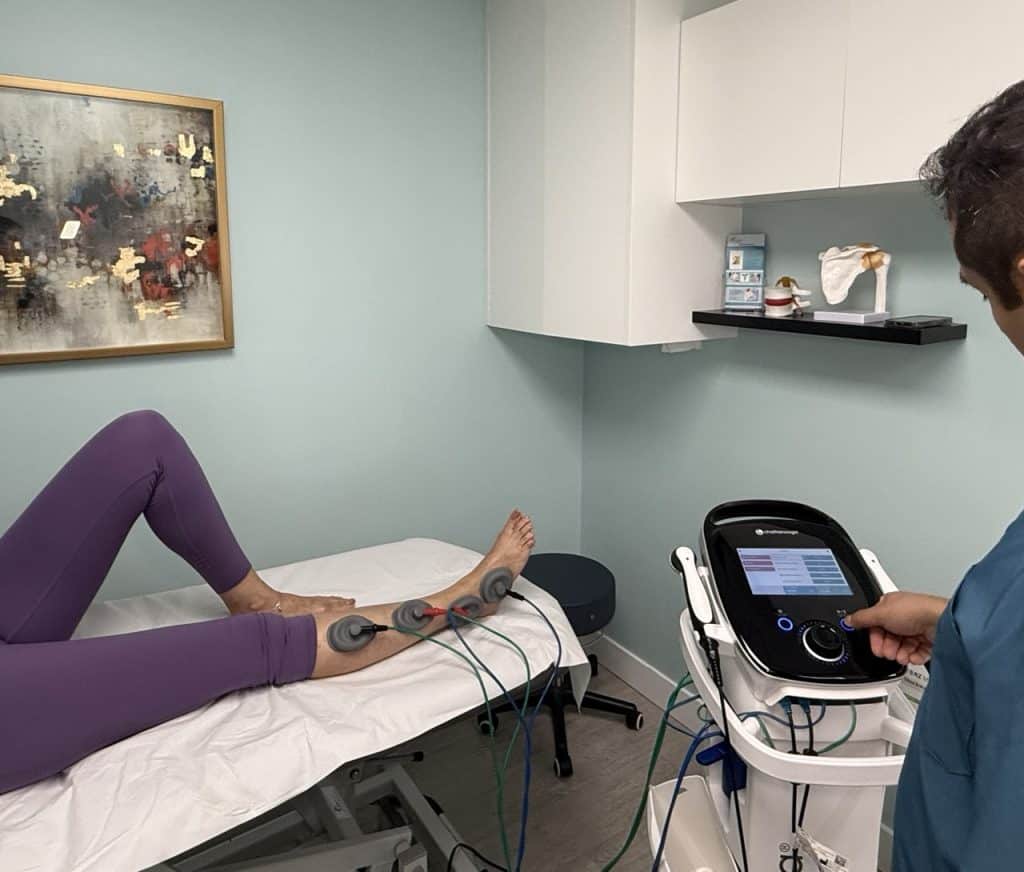Are you curious about the Physiotherapy methods that can transform your health journey? Maybe you’ve heard of cutting-edge treatments like Shockwave Therapy or pelvic floor physio and wondered if they truly live up to the hype. In today’s article, we’re diving deep into the world of physiotherapy, unraveling seven lesser-known facts backed by scientific research and real-world success stories. Whether you’re an athlete recovering from an injury, an office worker with chronic back pain, or simply someone eager to optimize overall well-being, these insights will help you understand why physiotherapy remains a cornerstone of modern healthcare—even more so in 2025 and beyond.

1. Physiotherapy Isn’t Just About Injury Recovery
Key Point: While physiotherapy is widely associated with helping people recover from surgeries and sports injuries, it goes far beyond rehabilitation.
In-Depth Explanation: According to the World Health Organization (WHO), physiotherapy can enhance everyday mobility, reduce chronic pain, and prevent future injuries through a combination of manual therapy, personalized exercise plans, and education on proper movement patterns.
“Physiotherapists are movement specialists who don’t just treat injuries; they optimize your body for peak performance and lasting well-being.” – Dr. Maria Thompson, Physical Therapy Researcher
Real-World Example: Office workers often experience neck and shoulder discomfort due to prolonged sitting. With targeted exercises and ergonomic assessments, a physiotherapist can help correct posture, alleviate pain, and reduce the likelihood of repetitive strain injuries.
2. Shockwave Therapy: A Game-Changer for Chronic Pain
Key Point: Shockwave Therapy isn’t just a futuristic buzzword; it’s a clinically proven modality that accelerates healing and combats chronic pain.
In-Depth Explanation: Shockwave Therapy uses acoustic waves to stimulate blood flow, promote tissue regeneration, and break down scar tissue. Clinical trials published in the British Journal of Sports Medicine indicate that Shockwave Therapy can be particularly effective for conditions like plantar fasciitis, tendinopathies, and even some cases of osteoarthritis.
Actionable Advice:
- Consult a Pro: Always get evaluated by a licensed physiotherapist to determine if Shockwave Therapy suits your specific condition.
- Stay Consistent: Consistency in treatment sessions is crucial to see measurable improvements, often starting to show benefits in three to four sessions.
3. Pelvic Floor Physio Benefits Both Men and Women
Key Point: Pelvic floor physio is often perceived as a women-only treatment—especially pre- or post-pregnancy. However, it offers significant benefits for men as well.
In-Depth Explanation: Strengthening and rehabilitating the pelvic floor can improve bladder control, reduce lower back pain, and enhance sexual health for individuals of all genders. In men, pelvic floor exercises can assist in recovering from prostate surgery and mitigating pelvic pain syndromes.
Did You Know? A study published in the Journal of Orthopaedic & Sports Physical Therapy showed that targeted pelvic floor therapy significantly reduced symptoms of chronic pelvic pain in male athletes, enabling them to return to full training regimens faster.
4. Best Physiotherapy Techniques Are Rooted in Data Science
Key Point: The Best Physiotherapy practices aren’t chosen randomly; they’re data-driven.
In-Depth Explanation: Modern physiotherapy uses motion capture technology, machine learning algorithms, and evidence-based guidelines to create personalized treatment plans. According to the American Physical Therapy Association (APTA), physiotherapy clinics that integrate wearable devices and advanced data analytics see higher patient satisfaction and quicker recovery times.
Real-World Example: Big data insights from thousands of patient records help physiotherapists predict the most effective interventions for specific injuries, fine-tuning each approach for maximum efficiency and safety.
5. Mental and Emotional Health Are Integral to Physical Recovery
Key Point: Successful physiotherapy isn’t just about exercises and manual treatments—it also involves psychological well-being.
In-Depth Explanation: Stress, anxiety, and even depression can prolong recovery times and heighten the perception of pain. Incorporating mindfulness, relaxation techniques, or even cognitive-behavioral therapy (CBT) elements into a physiotherapy program can accelerate healing.
Practical Tip: Start each session with a few deep breathing exercises. This simple step can lower stress hormones and prime your body for optimal healing, especially beneficial if you’re dealing with chronic conditions like fibromyalgia or persistent back pain.
6. Early Intervention Prevents Long-Term Complications
Key Point: Most people visit a physiotherapist after their pain becomes severe, but early intervention could spare them prolonged discomfort.
In-Depth Explanation: Studies show that prompt physiotherapy—especially within the first two weeks of an injury—can significantly reduce the risk of long-term complications. Whether you’re dealing with a mild sprain or recurring muscle tension, addressing the issue early can prevent compensatory movements that exacerbate pain.
I once ignored a minor ankle sprain for weeks. By the time I finally saw a physiotherapist, I’d developed hip pain from walking differently. Had I sought care earlier, I would’ve saved myself months of recovery.
7. Technology and Telehealth Are Revolutionizing Access
Key Point: Telehealth physiotherapy sessions and remote monitoring tools are making high-quality care more accessible than ever.
In-Depth Explanation: Virtual consultations, combined with wearable tech for real-time data tracking, allow you to receive expert guidance from the comfort of your home. This approach not only saves time but also ensures continuity of care, essential for those living in remote regions or juggling busy schedules.
Pro Tip: If you have a reliable internet connection, consider combining in-clinic visits with telehealth follow-ups. This hybrid model ensures accountability while giving you the flexibility to manage therapy sessions around your life commitments.

Conclusion
Physiotherapy is an ever-evolving field that blends science, technology, and human touch to support holistic health. From groundbreaking treatments like Shockwave Therapy to lesser-known benefits of pelvic floor physio, there’s more than meets the eye when it comes to modern, Best Physiotherapy practices. Whether you’re an athlete, a busy professional, or someone looking to age gracefully, staying informed about these seven fascinating facts will empower you to take proactive steps toward better mobility, pain management, and overall well-being.
Frequently Asked Questions (FAQ)
-
Is physiotherapy only for people with severe injuries?
Absolutely not. Physiotherapy can be preventative, helping improve posture, balance, and overall wellness before any severe issues arise. -
How many sessions of Shockwave Therapy are usually needed for pain relief?
Most conditions start showing improvement after three to four sessions, though the exact number varies depending on the severity and location of the injury. -
Is pelvic floor physio painful?
Generally, pelvic floor physio is gentle and customized to each patient’s comfort level. Some discomfort may occur, but it’s often temporary and significantly less than living with untreated pelvic floor issues. -
Can physiotherapy help with chronic stress or anxiety?
Indirectly, yes. By alleviating physical discomfort and teaching relaxation techniques, physiotherapy can reduce stress levels and improve mental well-being. -
What should I wear to a physiotherapy session?
Comfortable, loose-fitting clothing that allows your physiotherapist to assess your mobility and apply manual techniques effectively.
References
- World Health Organization (WHO). https://www.who.int/
- American Physical Therapy Association (APTA). https://www.apta.org/




